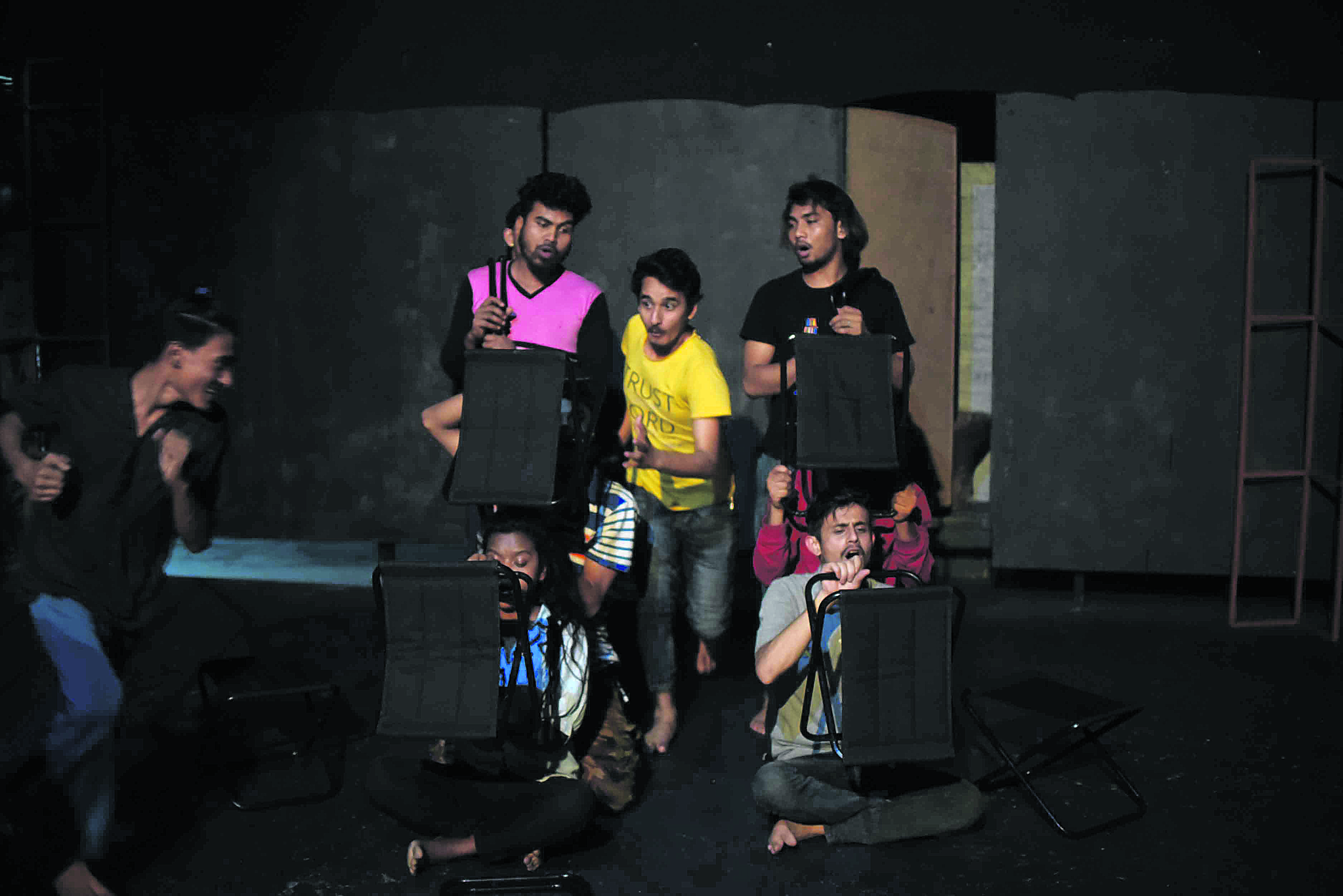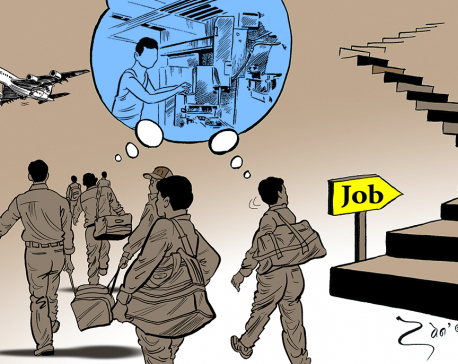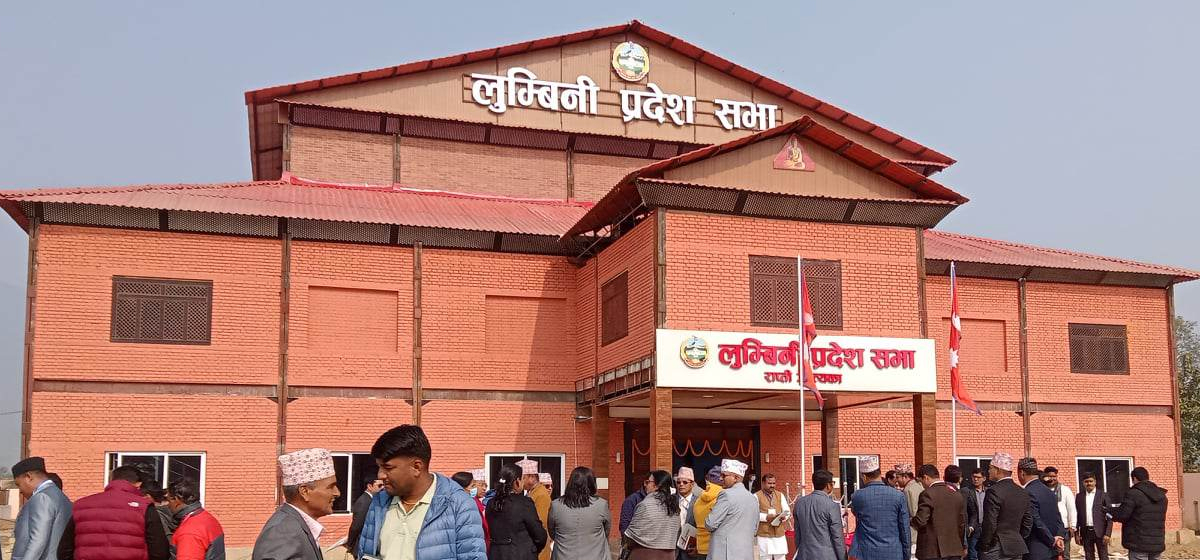
OR

The team at Shilpee Theatre has decided to keep things realistic for “Symphony of Storm”, their new play that circles around the “storm” that comes with being a teenager in our society, encapsulating different dimensions of the teenage life ranging from education and family matters to love.
The play is written and directed by Yubaraj Ghimire. Previously, Ghimire had been visiting schools around Kathmandu giving Theatre in Education (TiE) training sessions where he held workshops with the students as well as the teachers. It was the conversations he had with both the students and the teachers that got him to write the play. He noticed that schools were extremely careful about molding their students into what was deemed right by the society but the students often felt suffocated and voiceless due to all the rules enforced on them.
The story of the play follows the life of an average middle class family in Nepal where the father works, the mother stays home, and the children (a daughter and a son) go to school. Their parents have overly high expectations from their children and the children (especially the daughter) have thoughts and experiences of their own. What follows is an “all too real” instances of conflict created by the beliefs and gaps between the characters in the story.
“Symphony of Storm” is a play that hopes to create discussions and introspections once it’s over. Here we bring to you an exclusive sneak peek into the making of the play to show you all that has gone into bringing it to life.
“I had to step back and look at things from an entirely new perspective.”
Director Ghimire is far from his teen life and so, like any other parent or adult, he was skeptical about teenage decisions. “But to not make this play another lesson-giving story, I knew I had to see things from the other side of the spectrum – the teenagers themselves,” he says.
And that made him realize that youths rarely had the space to openly talk about their feelings and emotions at home or even at school as they were expected to only care about the subjects taught at school and nothing else. And Ghimire has tried to get this very idea across through his play along with adding dimensions of an average Nepali family life, peer interactions at school, and school politics.
From all his interactions with students and adults during the TiE training, Ghimire also found a gap of communication between the children and the adult in their lives. This forced some children to take up harmful ways just to find a companion. “I found that ‘urban’ youths were often ignored and even stereotyped and their story remained relatively untold,” he says.
With the help of his interaction with the students, he realized that they too had questions and aspirations but lacked the space to pour it out. Ghimire claims that some ideas of the play might not sit well with some parents, but as long as it gets them talking, he says, he will consider his job well done.
“The beauty lies in how relatable it is.”
Actors Nisseem Shrestha and Sangita Uranw play two 16 year olds struggling to find their voice in school and at home. Uranw says her character’s life almost mirrors her own, as she also felt like an outcast during the first year of college. “In the play, you can see her trying to find someone she can get close to,” she says adding that this takes a harmful turn when her character starts smoking just so she can talk to someone.
Similarly, Shrestha claims that she went out of her comfort zone in order to play the character and, though it was challenging, she has learnt to enjoy the process. She could see some elements of the play match things that happened in real life like how schools make it a big deal for a girl and a boy to be close calling them “boyfriend-girlfriend” which again is a no-no in our society. Jhakendra B.C. plays the father, a typical office-goer, unaware of his children’s emotions and tied down by the beliefs of the society.
Pabitra Khadka, who plays the mother in the play, says deriving inspiration for her character was pretty simple as she had seen countless housewives bored and irritated by how their lives had turned out and how little control they had over their own and their children’s freedom. At the end of the play, she hopes to see the women in the audience become more vocal about their ordeals and the men more considerate towards the women around them.
“The music is there to fill the gaps.”
Smarika Phuyal, Niman Chitrakar, Rabin Pariyar, and Santosh Kapali add an extra layer of symphony to “Symphony of Storm” with the help of their vocals, a guitar, a cajón and some other percussion instruments. There are two Queen’s songs – “I Want to Break Free” and “We Will Rock You” that, Phuyal says, highlight the student’s difference of ideals and opinions from the adults around them. Other two songs are Nepali songs written by the director himself that showcases how parents too have lived as teenagers and have failed to understand their children. “Along with adding melody to transitions, the music is there to speak for the characters when they are silent,” explains Phuyal.
“The props have multiple uses.”
According to Ghimire, though the play is realistic, the props used are “stylized” i.e. the same prop serves as multiple items needed throughout the play. “The limitation to theatre is always the space so we have to get creative to fit the needs of the play,” he says adding that it may not be possible to show an ocean in the play but with the help of props it is possible to show its essence.
Ghimire also points out the use of metal frames hints towards the confinement of thoughts of the characters in the play. For example, the children are expected to sit quietly around the adults, the mother is expected to work alone in the kitchen etc. Similarly, it also shows that narrowness with which adults see new ideals proposed by the younger generation and also how close yet distant the parents in the story are with their own children.
Khadka, who is also responsible for the costumes, says that as the play is of recent context, there is no particular focus on costumes and the characters will be wearing what people their ages currently seem to prefer.


You May Like This

Ready to work
There seems to be a huge gap between what the industry is looking for and what the colleges and universities... Read More...

State-Minister for Education Adhikari bats for education reform
CHITWAN, Sept 27: State-Minister for Education, Sheshnath Adhikari, has given a clarion call to the concerned authorities to bring about... Read More...

Minister for Youth and Sports participates in Youth Forum roundtable
KATHMANDU, Jan 31: Minister for Youth and Sports, Mr Daljit BK Shreepaili, participated in the ministerial roundtable of the 2017... Read More...


Just In
- Resignation of JSP minister rejected in Lumbini province
- Russia warns NATO nuclear facilities in Poland could become military target
- 16th Five Year Plan: Govt unveils 40 goals for prosperity (with full list)
- SC hearing on fake Bhutanese refugees case involving ex-deputy PM Rayamajhi today
- Clash erupts between police and agitating locals in Dhanusha, nine tear gas shells fired
- Abducted Mishra rescued after eight hours, six arrested
- Forest fire destroys 13 houses in Khotang
- First meeting of Nepal-China aid projects concludes















Leave A Comment